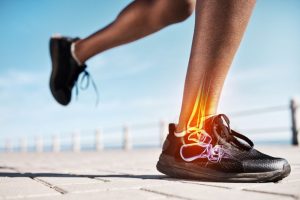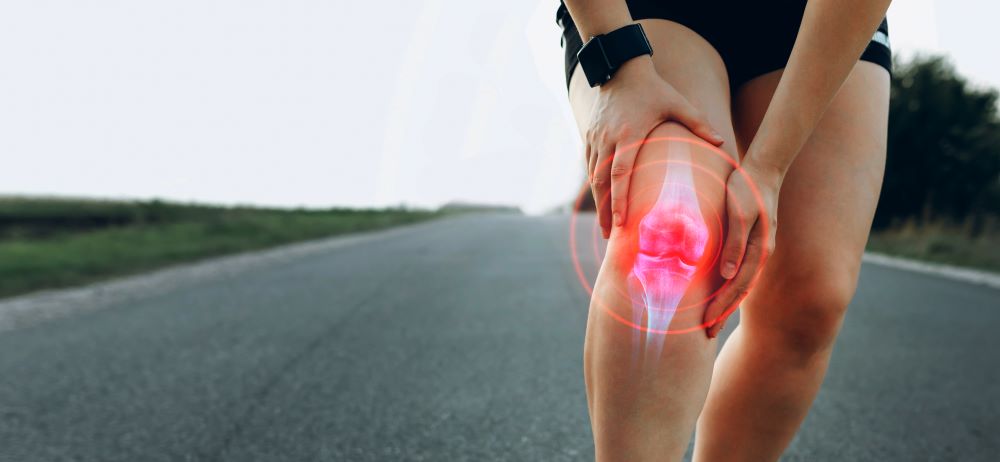Note: If you are just starting with running – or any form of new physical activity – it is highly recommended that you talk to your doctor. The following article is NOT meant to be advice of any kind. All people have different results from running. Listen to your doctor and listen to your body!
Running is a popular form of exercise that has numerous health benefits. It is a great way to improve cardiovascular health, increase endurance, and burn calories. However, there is a common concern among runners about the impact of running on their joints. Many believe that running can cause joint damage and lead to conditions such as arthritis.
Research has shown that running does have an impact on the joints, but the extent of the damage is dependent on various factors. The amount of force exerted on the joints during running is one of the primary factors that can affect joint health. This force is influenced by factors such as body weight, running surface, and running technique. Additionally, the frequency and intensity of running can also play a role in joint health.
Despite the concerns about joint damage, many runners continue to run without experiencing any significant joint problems. In fact, some studies have shown that running can actually have a protective effect on joint health by strengthening the muscles and bones around the joints. Overall, the effects of running on joint health are complex and depend on various factors. In this article, we will explore the impact of running on joint health and provide tips on how to minimize the risk of joint damage while running.
Understanding Joints
Joints are the connections between bones that allow movement. They are essential for everyday life and physical activities such as running. Understanding how joints work can help runners prevent injuries and improve their performance.
There are different types of joints, including hinge joints, ball-and-socket joints, and pivot joints. Each type of joint allows different types of movement. For example, hinge joints, such as the knee joint, allow movement in only one direction, while ball-and-socket joints, such as the hip joint, allow movement in multiple directions.
Joints are made up of several components, including cartilage, ligaments, tendons, and synovial fluid. Cartilage is a smooth, rubbery substance that covers the ends of bones and helps reduce friction between them. Ligaments are strong, fibrous bands that connect bones to each other and provide stability to the joint. Tendons are tough, flexible bands that attach muscles to bones and help move the joint. Synovial fluid is a thick, clear fluid that lubricates the joint and provides nutrients to the cartilage.
When a joint is healthy, all of these components work together to allow smooth and pain-free movement. However, when a joint is injured or overused, these components can become damaged, leading to pain, swelling, and stiffness.
In conclusion, understanding the structure and function of joints is essential for runners who want to prevent injuries and improve their performance. By taking care of their joints through proper training, nutrition, and recovery, runners can enjoy the benefits of running without putting undue stress on their joints.
Impact of Running on Joints
Running is a popular form of exercise that can provide numerous health benefits. However, it is also known to put a significant amount of stress on the joints, especially in the lower body. Here are some of the effects of running on joints:
Knee Joints
The knee joint is one of the most commonly affected joints by running. With each stride, the knee absorbs a force that is equivalent to three to five times the body weight. This repetitive impact can lead to knee pain, swelling, and even injuries such as patellofemoral pain syndrome and runner’s knee.
Hip Joints
The hip joint is also affected by running, particularly in long-distance runners. The repetitive motion of running can cause inflammation and pain in the hip joint, leading to conditions such as hip bursitis and hip labral tears.
Ankle Joints
 The ankle joint is responsible for absorbing the shock of each footfall when running. Over time, this can lead to joint pain, stiffness, and even arthritis in some cases.
The ankle joint is responsible for absorbing the shock of each footfall when running. Over time, this can lead to joint pain, stiffness, and even arthritis in some cases.
Foot Joints
The foot joints, including the toes and the arch of the foot, are also affected by running. The constant pressure and impact can cause conditions such as plantar fasciitis and stress fractures.
Overall, running can have a significant impact on joints, especially if proper precautions are not taken. It is important to wear appropriate footwear, stretch before and after running, and gradually increase mileage and intensity to minimize the risk of joint injuries.
Positive Effects of Running on Joints
Regular running has many positive effects on the body, including strengthening muscles, increasing bone density, and improving balance and coordination. Contrary to popular belief, running can actually be good for your joints, as long as it is done properly and in moderation.
Strengthens Muscles
Running is a great way to strengthen the muscles in your legs, hips, and core. Strong muscles help support and protect your joints, reducing the risk of injury and pain. Running also helps to improve overall muscle tone and definition, which can have a positive impact on your overall physical health.
Increases Bone Density
Running can also help to increase bone density, which is important for maintaining strong and healthy bones. Regular running can help to stimulate the growth of new bone tissue, which can help to prevent conditions like osteoporosis and reduce the risk of fractures.
Improves Balance and Coordination
Running requires a great deal of balance and coordination, which can help to improve these skills over time. Improved balance and coordination can help to reduce the risk of falls and other accidents, which can have a significant impact on overall health and well-being.
Overall, running can have many positive effects on the body, including strengthening muscles, increasing bone density, and improving balance and coordination. However, it is important to approach running with caution and to take steps to prevent injury, such as wearing proper footwear and gradually increasing the intensity and duration of your runs.
Negative Effects of Running on Joints
Running is a popular form of exercise that can provide numerous health benefits. However, it can also have negative effects on joints, especially when done excessively or improperly. Here are some of the negative effects of running on joints:
Wear and Tear
Running involves repetitive impact forces that can cause wear and tear on joints over time. The constant pounding can lead to degeneration of cartilage, which can result in osteoarthritis. This is particularly true for weight-bearing joints such as the knees, hips, and ankles. The risk of wear and tear increases with age and can be exacerbated by pre-existing joint conditions.
Risk of Injuries
Running also carries a risk of acute injuries such as sprains, strains, and fractures. These injuries can occur due to sudden movements, falls, or overuse. Common injuries include runner’s knee, shin splints, and stress fractures. These injuries can cause pain, swelling, and limited mobility, and may require medical attention.
Joint Inflammation
Running can also cause joint inflammation, especially if done on hard surfaces such as concrete. This can lead to conditions such as bursitis and tendinitis, which are characterized by pain, swelling, and stiffness. Inflammation can also exacerbate pre-existing joint conditions and increase the risk of developing osteoarthritis.
In conclusion, while running can provide numerous health benefits, it can also have negative effects on joints if done excessively or improperly. Wear and tear, risk of injuries, and joint inflammation are some of the negative effects of running on joints. It is important to take precautions such as proper warm-up, stretching, and rest days to minimize the risk of these negative effects.
Factors Influencing the Effects
Running Technique
The way a person runs can significantly affect the impact on their joints. Poor running technique can lead to increased stress on the joints, which can result in pain and injury. Proper running form includes landing on the midfoot or forefoot, keeping the knees slightly bent, and maintaining an upright posture. When a runner lands on their heel, there is a greater force transmitted through the body, which can lead to increased joint stress.
Running Frequency
The frequency of running can also affect the joints. Running too often without proper rest can lead to overuse injuries such as stress fractures, tendonitis, and joint pain. It is important to gradually increase running frequency to allow the joints to adapt to the increased stress. Additionally, taking rest days and cross-training can help reduce the impact on the joints.
Running Terrain
The terrain on which a person runs can also affect the impact on their joints. Running on hard surfaces such as concrete or asphalt can increase the stress on the joints. On the other hand, running on softer surfaces such as grass, dirt, or a track can reduce the impact on the joints. It is important to vary the terrain on which a person runs to reduce the risk of injury and to allow the joints to adapt to different surfaces.
Overall, proper running technique, appropriate running frequency, and varied running terrain can help reduce the impact on the joints and prevent injury.
Preventing Joint Damage While Running
Proper Running Gear
Wearing the right shoes and clothing can help reduce the impact on your joints while running. Choose shoes with good cushioning and support to absorb shock and reduce stress on your knees and ankles. It’s also important to wear clothing that is comfortable and allows for a full range of motion.
Adequate Rest
Rest is crucial for preventing joint damage while running. Overuse injuries can occur when the body is not given enough time to recover between runs. It’s recommended to take at least one day off per week and to vary the intensity and duration of your runs to prevent repetitive stress injuries.
Balanced Diet
Maintaining a healthy and balanced diet can also play a role in preventing joint damage while running. Eating a diet rich in fruits, vegetables, lean proteins, and healthy fats can help reduce inflammation and promote joint health. It’s also important to stay hydrated before, during, and after your runs to help keep your joints lubricated.
By following these tips, runners can help prevent joint damage and stay healthy and injury-free.
Conclusion
In conclusion, running can have both positive and negative effects on joints. While it can help strengthen muscles and improve cardiovascular health, it can also put stress on joints, especially if done on hard surfaces or with poor form.
It is important to note that the effects of running on joints can vary depending on individual factors such as age, weight, and pre-existing conditions. It is recommended to consult with a healthcare professional before starting a running routine, especially if there are concerns about joint health.
To minimize the risk of joint injury, runners can take several precautions such as wearing proper footwear, stretching before and after running, and gradually increasing intensity and distance. Additionally, incorporating low-impact exercises such as swimming or cycling can help balance the impact on joints.
Overall, running can be a beneficial form of exercise when done safely and with proper precautions. By being aware of the potential effects on joints and taking steps to minimize risk, runners can enjoy the many physical and mental benefits of this popular activity.


